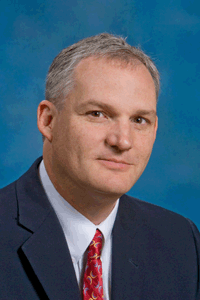In his role as vice-president of industry and regulatory affairs at the Experimental Aircraft Association, Earl Lawrence battles the corner for recreational aviators, from ultralights to ex-military jets
The relationship between leisure pilots and regulators in the USA was largely established by the Experimental Aircraft Association, which runs the world's biggest air show, AirVenture in Oshkosh. Earl Lawrence is vice-president of industry and regulatory affairs.
What does EAA do, and what is your mission as vice-president of industry and government relations?
The EAA is the world leader in recreational aviation. With an international membership of 170,000 people in more than 112 nations, The EAA brings together aviation enthusiasts, pilots and aircraft owners who are dedicated to "sharing the spirit of aviation".
 |
|---|
The EAA's advocacy mission is to protect the freedom of flight and reduce the regulatory barriers affecting the affordability and access for recreational aviators. Recreational aviation includes all aircraft in the entire spectrum from ultralights and homebuilt aircraft to ex-military jets and vintage aircraft.
Is there anything you miss about maintaining Shuttle engines and helping with the International Space Station at the Rocketdyne division of North American Rockwell?
I miss being involved in space exploration and the people who were involved in space exploration. I do not miss the bureaucracy one bit.
Maybe if you've read things from Burt Rutan. the bureaucracy wears you down and you don't have that freedom while working on a NASA contract.
As chair of ASTM International Committee F37 on light sport aircraft, do you feel pride as light sport spreads internationally?
I'm really proud when I see other countries accept it, because it's not a government standard. When we decided who we were going to go with, ASTM or any of the other organisations, it was important for us to have a global partner.
So far, so good? Chile's adopted it. Peru is still looking at it. Colombia has adopted it. South Africa is accepting aircraft built to the standards. New Zealand has published. The comment period closed and they're getting ready to adopt it.
Of course, Australia already has it. Argentina has not (accepted LSA) yet, but they are in the process of including the regulation to accept the standards. China is in the process, Pakistan is looking at it. Venezuela is planning to issue primary type certificate for LSA-style aircraft. Guatamala's still working on it, India's still working on it, Israel is in process of revising. Russia's exploring it.
Do you have a reserve team in Washington to call upon?
Well, you have to have a good rolodex. You have to acknowledge that we're a team leader, and it takes a team to work on any of this stuff.
We have a group of volunteer attorneys who help out, who are EAA members. I have EAA members in different parts of Canada, Australia and in Europe who I draw upon for their input and expertise when issues come up in their regions and they send things to me, saying: "Hey, be aware this is going on."
I have retired Federal Aviation Administration folks to consult with and, actually, the current FAA folks to consult with as well.
Are you optimistic user fees won't become reality?
Cautiously optimistic, yes. General aviation user fees are currently off the table, but that victory is not secure.
The airline industry and the administration continue to push for air traffic control user fees on general aviation aircraft.
What is not acknowledged by the airlines and the administration is that general aviation pays into the aviation trust fund.
General aviation is paying its fair share, and the EAA will continue to fight hard against user fees and to encourage the US Congress to pass a sensible FAA funding bill.
Source: Flight International


























